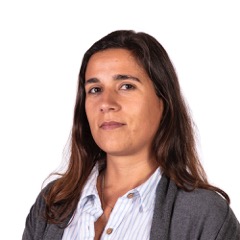M.F. Montemor
Full Professor at Instituto Superior Técnico, Department of Chemical Engineering and Vice president for academic Affairs. She is the actual coordinator of the course “energy storage” and member of the executive Committee of the Master Programme in Energy engineering and Management.
Her scientific activity focusses the development of new functional coatings for surface protection and for energy conversion and storage. One of her most relevant research line includes metal compound redox conductive coatings for energy storage in supercapacitor applications.
She aims at finding new solutions for advanced electrochemical energy storage applications and she drives an electric car that is charged with renewable energy in her farm in the country side.
Sónia Eugénio
Assistant Professor at Atlântica - School of Management Sciences, Health, IT & Engineering where she teaches several bachelor and master-level courses on Materials Engineering. She is also involved with EIT InnoEnergy in the development of online educational contents in the field of Battery Storage.
She is a researcher in Centro de Química Estrutural at IST and her scientific activity focus on the development and characterization of new active materials for supercapacitors and hydrogen production through electrochemical methods.
She is a running and cycling enthusiast and drives her bicycle to work whenever she can.
Joana Madeira
Joana Madeira has a Degree in Materials Engineering and a Master in Corrosion Science at Instituto Superior Técnico. She is a researcher at Corrosion Science and Surface Engineering Group (Centro de Química Estrutural IST) since 2014 in the field of Aluminium Corrosion. In 2018 started to focus her work on the field of Energy Storage, namely in developing an online course on Battery Storage.
Passionate about Science and Engineering she has found in Energy Storage an exciting and promising subject to dedicate herself 100%.




